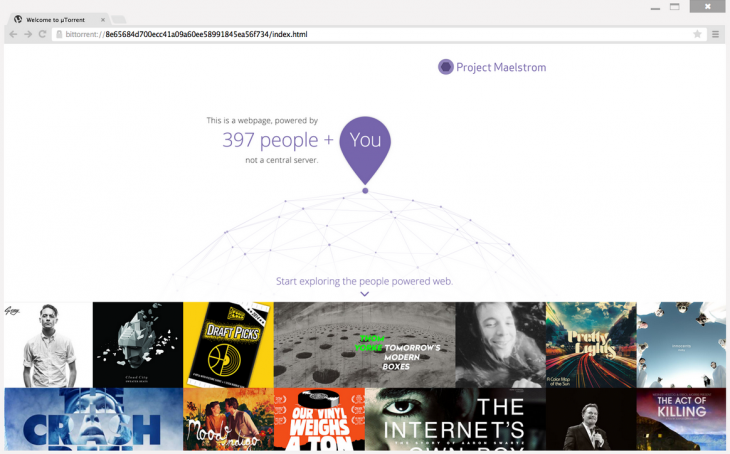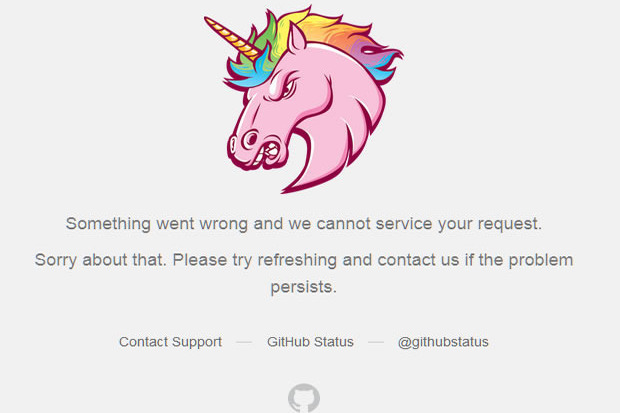Thursday, April 30. 2015
IBM Sets Quantum Computing Milestone
Via Information week
-----
Technology giant IBM announced two major breakthroughs towards the building of a practical quantum computer, the next evolution in computing that will be required as Moore’s Law runs out of steam.
Described in the April 29 issue of the journal Nature Communications, the breakthroughs include the ability to detect and measure both kinds of quantum errors simultaneously and a new kind of circuit design, which the company claims is "the only physical architecture that could successfully scale to larger dimensions."
The two innovations are interrelated: The quantum bit circuit, based on a square lattice of four superconducting "qubits" -- short for quantum bits -- on a chip roughly one-quarter-inch square, enables both types of quantum errors to be detected at the same time.
The IBM project, which was funded in part by the Intelligence Advanced Research Projects Activity (IARPA) Multi-Qubit Coherent Operations program, opts for a square-shaped design as opposed to a linear array, which IBM said prevents the detection of both kinds of quantum errors simultaneously.
Jerry M. Chow, manager of the Experimental Quantum Computing group at IBM’s T.J. Watson Research Center, and the primary investigator on the IARPA-sponsored Multi-Qubit Coherent Operations project, told InformationWeek that one area they are excited about is the potential for quantum computers to simulate systems in nature.
"In physics and chemistry, quantum computing will allow us to design new materials and drug compounds without the expensive trial-and-error experiments in the lab, dramatically speeding up the rate and pace of innovation," Chow said. "For instance, the effectiveness of drugs is governed by the precise nature of the chemical bonds in the molecules constituting the drug."
He noted the computational chemistry required for many of these problems is out of the reach of classical computers, and this is one example of where quantum computers may be capable of solving such problems leading to better drug design.
The qubits, IBM said, could be designed and manufactured using standard silicon fabrication techniques, once a handful of superconducting qubits can be manufactured quickly and reliably, and boast low error-rates.
"Quantum information is very fragile, requiring the quantum elements to be cooled to near absolute zero temperature and shielded from its environment to minimize errors," Chow explained. "A quantum bit, the component that carries information in a quantum system, can be susceptible to two types of errors -- bit-flip and phase-flip. It either error occurs, the information is destroyed and it cannot carry out the operation."
He said it is important to detect and measure both types of errors in order to know what errors are present and how to address them, noting no one has been able to do this before in a scalable architecture.
"We are at the stage of figuring out the building blocks of quantum computers -- a new paradigm of computing completely different than how computers are built today," Wong said. "In the arc of quantum computing progress, we are at the moment of time similar to when scientists were building the first transistor. If built, quantum computers have the potential to unlock new applications for scientific discovery and data analysis and will be more powerful than any supercomputer today."
Monday, April 27. 2015
Windows 10 can run reworked Android and iOS apps
Via The Verge
-----
After months of rumors, Microsoft is revealing its plans to get mobile apps on Windows 10 today. While the company has been investigating emulating Android apps, it has settled on a different solution, or set of solutions, that will allow developers to bring their existing code to Windows 10.
iOS and Android developers will be able to port their apps and games directly to Windows universal apps, and Microsoft is enabling this with two new software development kits. On the Android side, Microsoft is enabling developers to use Java and C++ code on Windows 10, and for iOS developers they’ll be able to take advantage of their existing Objective C code. "We want to enable developers to leverage their current code and current skills to start building those Windows applications in the Store, and to be able to extend those applications," explained Microsoft’s Terry Myerson during an interview with The Verge this morning.
The idea is simple, get apps on Windows 10 without the need for developers to rebuild them fully for Windows. While it sounds simple, the actual process will be a little more complicated than just pushing a few buttons to recompile apps. "Initially it will be analogous to what Amazon offers," notes Myerson, referring to the Android work Microsoft is doing. "If they’re using some Google API… we have created Microsoft replacements for those APIs." Microsoft’s pitch to developers is to bring their code across without many changes, and then eventually leverage the capabilities of Windows like Cortana, Xbox Live, Holograms, Live Tiles, and more. Microsoft has been testing its new tools with some key developers like King, the maker of Candy Crush Saga, to get games ported across to Windows. Candy Crush Saga as it exists today on Windows Phone has been converted from iOS code using Microsoft’s tools without many modifications.

During Microsoft’s planning for bringing iOS and Android apps to Windows, Myerson admits it wasn’t always an obvious choice to have both. "At times we’ve thought, let's just do iOS," Myerson explains. "But when we think of Windows we really think of everyone on the planet. There’s countries where iOS devices aren’t available." Supporting both Android and iOS developers allows Microsoft to capture everyone who is developing for mobile platforms right now, even if most companies still continue to target iOS first and port their apps to Android at the same time or shortly afterward. By supporting iOS developers, Microsoft wants to be third in line for these ported apps, and that’s a better situation than it faces today.
Alongside the iOS and Android SDKs, Microsoft is also revealing ways for websites and Windows desktop apps to make their way over to Windows universal apps. Microsoft has created a way for websites to run inside a Windows universal app, and use system services like notifications and in-app purchases. This should allow website owners to easily create web apps without much effort, and list those apps in the Windows Store. It’s not the best alternative to a native app for a lot of scenarios, but for simple websites it offers up a new way to create an app without its developers having to learn new code languages. Microsoft is also looking toward existing Windows desktop app developers with Windows 10. Developers will be able to leverage their .NET and Win32 work and bring this to Windows universal apps. "Sixteen million .NET and Win32 apps are still being used every month on Windows 7 and Windows 8," explains Myerson, so it’s clear Microsoft needs to get these into Windows 10.
Microsoft is using some of its HyperV work to virtualize these existing desktop apps on Windows 10. Adobe is one particular test case where Microsoft has been working closely with the firm to package its apps ready for Windows 10. Adobe Photoshop Elements is coming to the Windows Store as a universal app, using this virtualization technology. Performance is key for many desktop apps, so it will be interesting to see if Microsoft has managed to maintain a fluid app experience with this virtualization.
Collectively, Microsoft is referring to these four new SDKs as bridges or ramps to get developers interested in Windows 10. It’s a key moment for the company to really win back developers and prove that Windows is still relevant in a world that continues to be dominated by Android and iOS. The aim, as Myerson puts it, is to get Windows 10 on 1 billion devices within the next two to three years. That’s a big goal, and the company will need the support of developers and apps to help it get there.
These SDKs will generate questions among Microsoft’s core development community, especially those who invested heavily in the company’s Metro-style design and the unique features of Windows apps in the past. The end result for consumers is, hopefully, more apps, but for developers it’s a question of whether to simply port their existing iOS and Android work across and leave it at that, or extend those apps to use Windows features or even some design elements. "We want to structure the platform so it’s not an all or nothing," says Myerson. "If you use everything together it’s beautiful, but that’s not required to get started."
Microsoft still has the tricky mix of ported apps to contend with, and that could result in an app store similar to Amazon's, or even one where developers still aren't interested in porting. This is just the beginning, and Windows universal apps, while promising, still face a rocky and uncertain future.
Friday, April 24. 2015
Analyst Watch: Ten reasons why open-source software will eat the world
Via SD Times
-----

I recently attended Facebook’s F8 developer conference in San Francisco, where I had a revelation on why it is going to be impossible to succeed as a technology vendor in the long run without deeply embracing open source. Of the many great presentations I listened to, I was most captivated by the ones that explained how Facebook internally developed software. I was impressed by how quickly the company is turning such important IP back into the community.
To be sure, many major Web companies like Google and Yahoo have been leveraging open-source dynamics aggressively and contribute back to the community. My aim is not to single out Facebook, except that it was during the F8 conference I had the opportunity to reflect on the drivers behind Facebook’s actions and why other technology providers may be wise to learn from them.
Here are my 10 reasons why open-source software is effectively becoming inevitable for infrastructure and application platform companies:
- Not reinventing the wheel: The most obvious reason to use open-source software is to build software faster, or to effectively stand on the shoulders of giants. Companies at the top of their game have to move fast and grab the best that have been contributed by a well-honed ecosystem and build their added innovation on top of it. Doing anything else is suboptimal and will ultimately leave you behind.
- Customization with benefits: When a company is at the top of its category, such as a social network with 1.4 billion users, available open-source software is typically only the starting point for a quality solution. Often the software has to be customized to be leveraged. Contributing your customizations back to open source allows them to be vetted and improved for your benefit.
- Motivated workforce: Beyond a good wage and a supportive work environment, there is little that can push developers to do high-quality work more than peer approval, community recognition, and the opportunity for fame. Turning open-source software back to the community and allowing developers to bask in the recognition of their peers is a powerful motivator and an important tool for employee retention.
- Attracting top talent: A similar dynamic is in play in the hiring process as tech companies compete to build their engineering teams. The opportunity to be visible in a broader developer community (or to attain peer recognition and fame) is potentially more important than getting top wages for some. Not contributing open source back to the community narrows the talent pool for tech vendors in an increasingly unacceptable way.
- The efficiency of standardized practices: Using open-source solutions means using standardized solutions to problems. Such standardization of patterns of use or work enforces a normalized set of organizational practices that will improve the work of many engineers at other firms. Such standardization leads to more-optimized organizations, which feature faster developer on-ramping and less wasted time. In other words, open source brings standardized organizational practices, which help avoid unnecessary experimentation.
- Business acceleration: Even in situations where a technology vendor is focused on bringing to market a solution as a central business plan, open source is increasingly replacing proprietary IP for infrastructure and application platform technologies. Creating an innovative solution and releasing it to open source can facilitate broader adoption of the technology with minimal investment in sales, marketing or professional service teams. This dynamic can also be leveraged by larger vendors to experiment in new ventures, and to similarly create wide adoption with minimal cost.
- A moat in plain sight: Creating IP in open source allows the creators to hone their skills and learn usage patterns ahead of the competition. The game then becomes to preserve that lead. Open source may not provide the lock-in protection to the owner that proprietary IP does, but the constant innovation and evolution required in operating in open-source environments fosters fast innovation that has now become essential to business success. Additionally, the visibility of the source code can further enlarge the moat around its innovation, discouraging other businesses from reinventing the wheel.
- Cleaner software: Creating IP in open source also means that the engineers have to operate in full daylight, enabling them to avoid the traps of plagiarized software and generally stay clear of patents. Many proprietary software companies have difficulty turning their large codebases into open source because of necessary time-consuming IP scrubbing processes. Open-source IP-based businesses avoid this problem from the get-go.
- Strategic safety: Basing a new product on open-source software can go a long way to persuade customers who might otherwise be concerned about the vendor’s financial resources or strategic commitment to the technology. It used to be that IT organizations only bought important (but proprietary) software from large, established tech companies. Open source allows smaller players to provide viable solutions by using openness as a competitive weapon to defuse the strategic safety argument. Since the source is open, in theory (and often only in theory) IT organizations can skill up on and support it if and when a small vendor disappears or loses interest.
- Customer goodwill: Finally, open source allows a tech vendor to accrue a great deal of goodwill with its customers and partners. If you are a company like Facebook, constantly and controversially disrupting norms in social interaction and privacy, being able to return value to the larger community through open-source software can go a long way to making up for the negatives of your disruption.
Monday, April 13. 2015
BitTorrent launches its Maelstrom P2P Web Browser in a public beta
Via TheNextWeb
-----

Back in December, we reported on the alpha for BitTorrent’s Maelstrom, a browser that uses BitTorrent’s P2P technology in order to place some control of the Web back in users’ hands by eliminating the need for centralized servers.
Maelstrom is now in beta, bring it one step closer to official release.
BitTorrent says more than 10,000 developers and 3,500 publishers signed
up for the alpha, and it’s using their insights to launch a more stable
public beta.
Along with the beta comes the first set of developer tools for the browser, helping publishers and programmers to build their websites around Maelstrom’s P2P technology. And they need to – Maelstrom can’t decentralize the Internet if there isn’t any native content for the platform.
It’s only available on Windows at the moment but if you’re interested and on Microsoft’s OS, you can download the beta from BitTorrent now.
? Project MaelstromWednesday, April 01. 2015
'Largest DDoS attack' in GitHub's history targets anticensorship projects
Via Network World
-----

GitHub has been hammered by a continuous DDoS attack for three days. It's the "largest DDoS attack in github.com's history." The attack is aimed at anti-censorship GreatFire and CN-NYTimes projects, but affected all of GitHub. The traffic is reportedly coming from China, as attackers are using the Chinese search engine Baidu for the purpose of "HTTP hijacking."
According to tweeted GitHub status messages, GitHub has been the victim of a Distributed Denial of Service (DDoS) attack since Thursday March 26. 24 hours later, GitHub said it had "all hands on deck" working to mitigate the continuous attack. After GitHub later deployed "volumetric attack defenses," the attack morphed to include GitHub pages and then "pages and assets." Today, GitHub said it was 71 hours into defending against the attack.
Quicksearch
Popular Entries
- The great Ars Android interface shootout (130671)
- Norton cyber crime study offers striking revenue loss statistics (100880)
- MeCam $49 flying camera concept follows you around, streams video to your phone (99676)
- Norton cyber crime study offers striking revenue loss statistics (57109)
- The PC inside your phone: A guide to the system-on-a-chip (56964)

